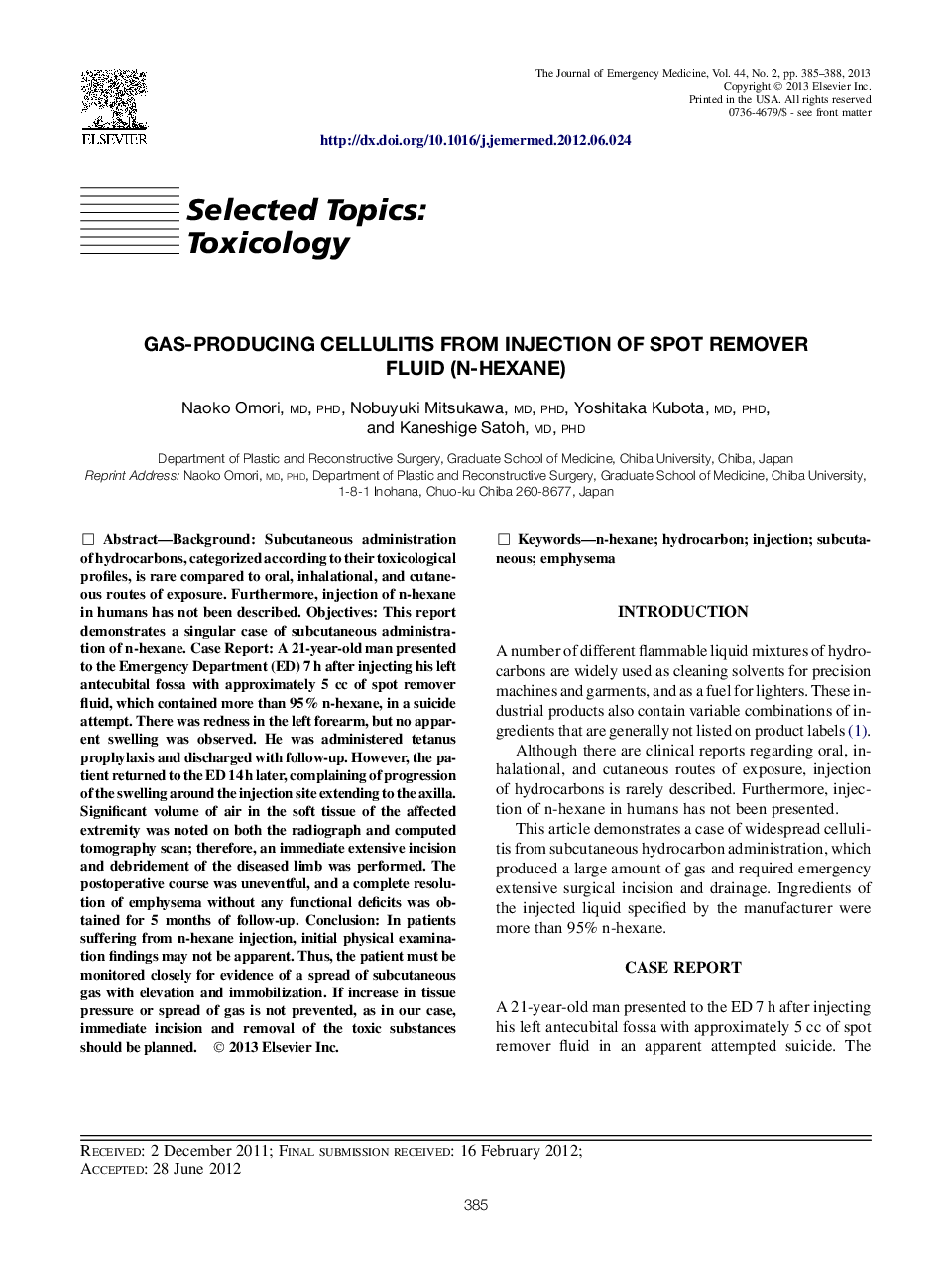| کد مقاله | کد نشریه | سال انتشار | مقاله انگلیسی | نسخه تمام متن |
|---|---|---|---|---|
| 3248309 | 1589152 | 2013 | 4 صفحه PDF | دانلود رایگان |

BackgroundSubcutaneous administration of hydrocarbons, categorized according to their toxicological profiles, is rare compared to oral, inhalational, and cutaneous routes of exposure. Furthermore, injection of n-hexane in humans has not been described.ObjectivesThis report demonstrates a singular case of subcutaneous administration of n-hexane.Case ReportA 21-year-old man presented to the Emergency Department (ED) 7 h after injecting his left antecubital fossa with approximately 5 cc of spot remover fluid, which contained more than 95% n-hexane, in a suicide attempt. There was redness in the left forearm, but no apparent swelling was observed. He was administered tetanus prophylaxis and discharged with follow-up. However, the patient returned to the ED 14 h later, complaining of progression of the swelling around the injection site extending to the axilla. Significant volume of air in the soft tissue of the affected extremity was noted on both the radiograph and computed tomography scan; therefore, an immediate extensive incision and debridement of the diseased limb was performed. The postoperative course was uneventful, and a complete resolution of emphysema without any functional deficits was obtained for 5 months of follow-up.ConclusionIn patients suffering from n-hexane injection, initial physical examination findings may not be apparent. Thus, the patient must be monitored closely for evidence of a spread of subcutaneous gas with elevation and immobilization. If increase in tissue pressure or spread of gas is not prevented, as in our case, immediate incision and removal of the toxic substances should be planned.
Journal: The Journal of Emergency Medicine - Volume 44, Issue 2, February 2013, Pages 385–388